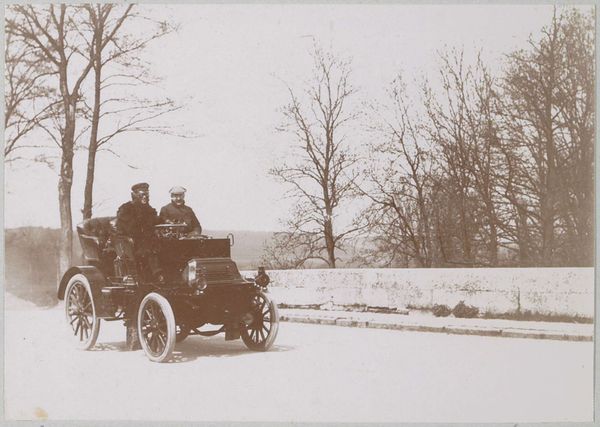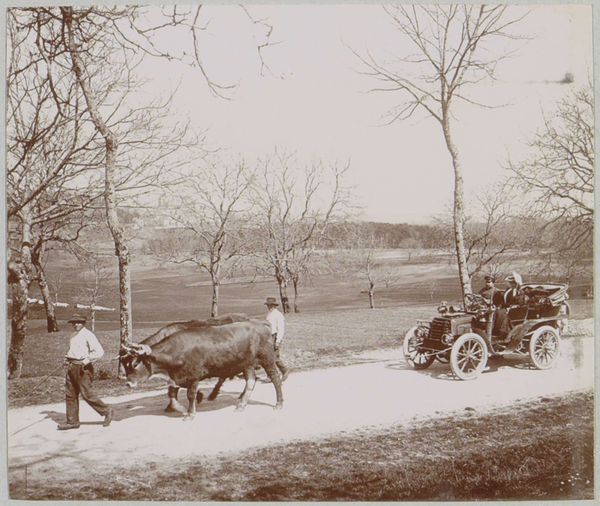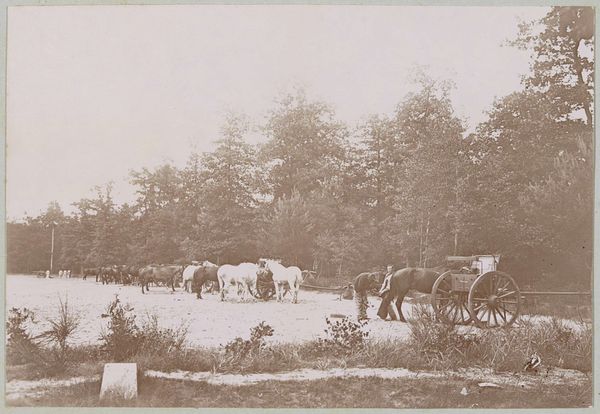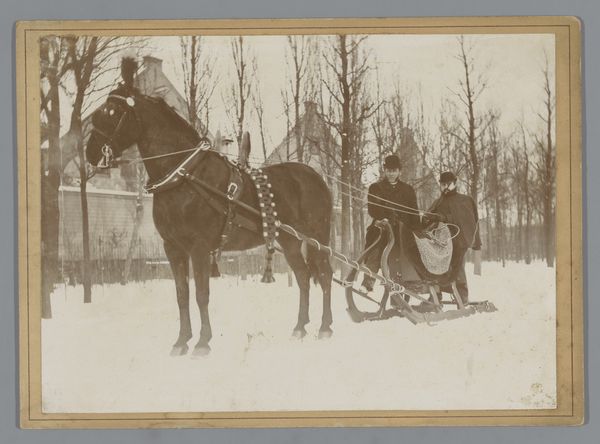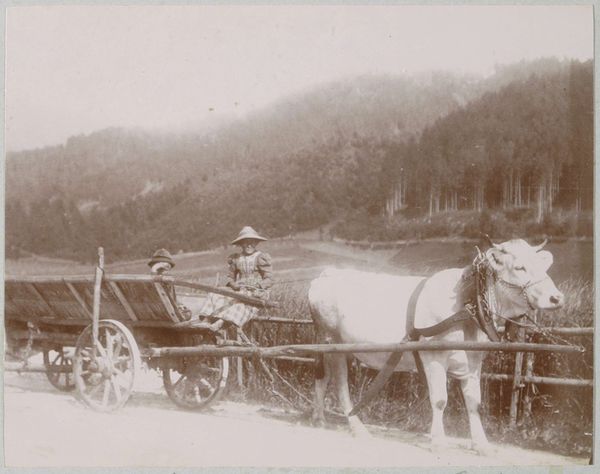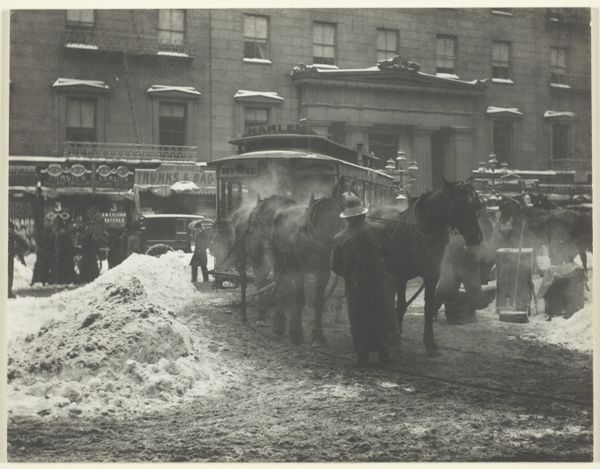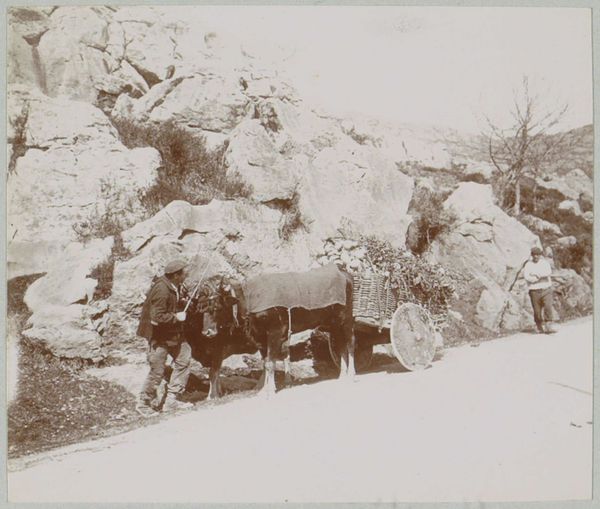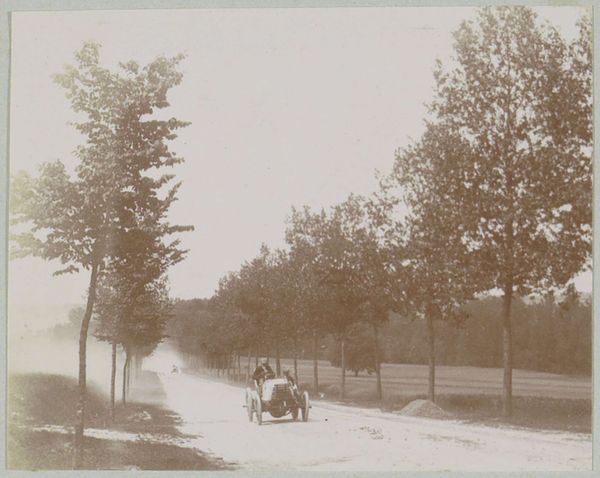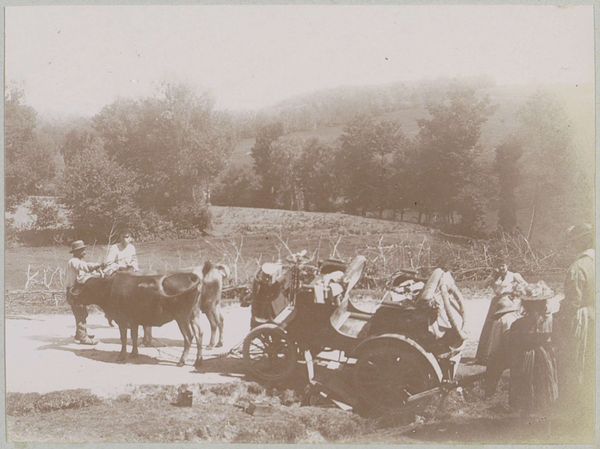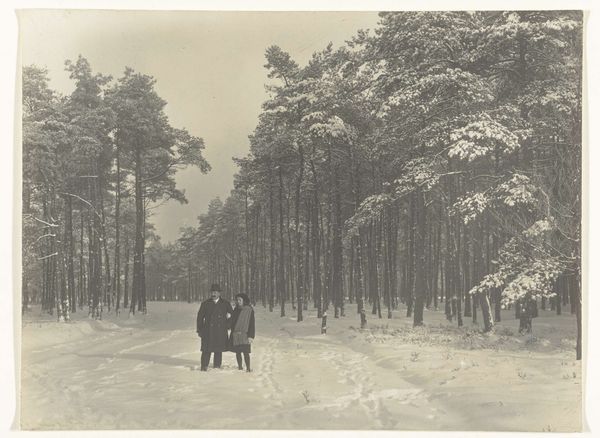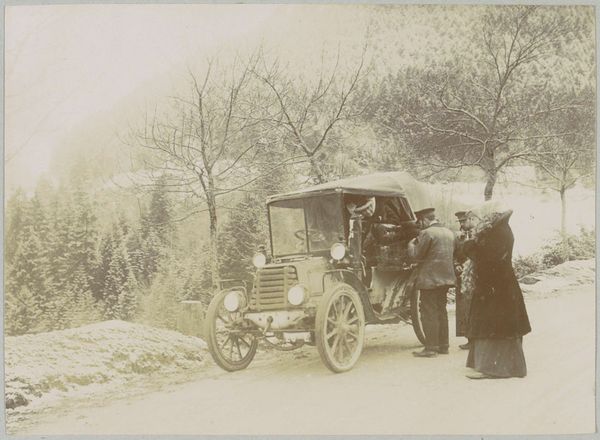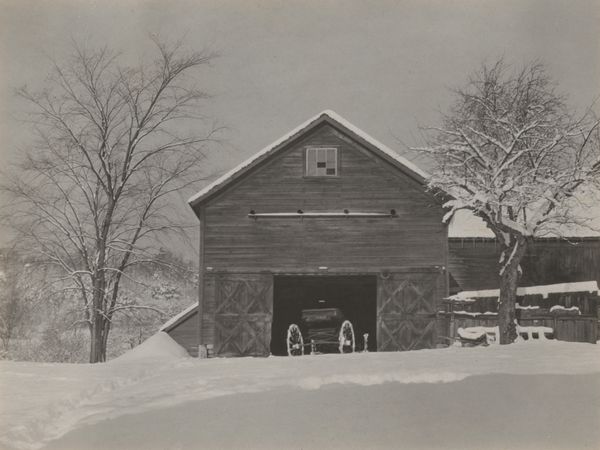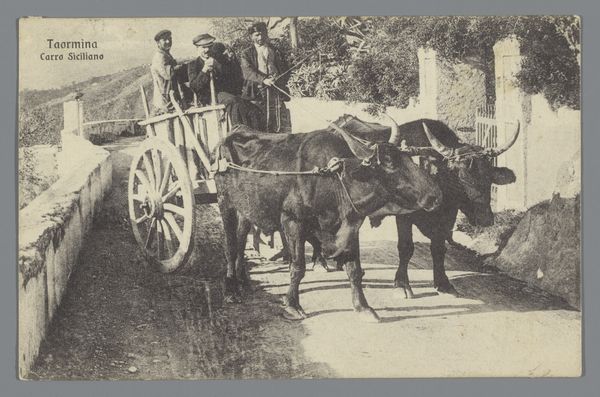
photography, gelatin-silver-print
#
pictorialism
#
pencil sketch
#
landscape
#
charcoal drawing
#
photography
#
pencil drawing
#
gelatin-silver-print
#
charcoal
#
graphite
#
realism
Dimensions: 2 5/8 x 3 1/8 in. (6.67 x 7.94 cm) (image, sheet)
Copyright: No Copyright - United States
Editor: This photograph, "Untitled," was taken by William B. Post around 1903, and it's a gelatin-silver print. What strikes me immediately is the way the stark black and white emphasizes the deep snow and the strong, forward movement of the oxen. What do you see in this piece, especially concerning the pictorial elements? Curator: Formally, I am compelled by the arrangement of tonal values, moving from the brightest whites in the foreground snow to the muted grays of the distant trees and the stark contrast on the cattle. Notice how the artist guides our gaze—from the lead oxen, through the burdened cart, toward the solitary figure. What do you make of the depth of field, how some details are sharpened, while others remain soft? Editor: It does seem very intentional. I’m interested in the sharp focus on the leading animals versus the softer focus of the background figures. It brings an intimacy to the experience, almost as though we are alongside them in the snow. Curator: Precisely. Pictorialism often employs techniques to mimic painting, aiming for an artistic effect rather than pure representation. Consider the textures rendered through the gelatin-silver process— the rough coats of the animals juxtaposed with the smooth snow. How does this play into the work’s overall composition and affect your understanding? Editor: The contrasting textures make the oxen more lifelike; it is a lovely counterpoint. Is the tonal gradation, from dark to light, part of what gives it a realistic effect? Curator: Indeed, by mastering light, shadow, and texture, the photographer constructs not merely an image, but a deliberate artistic statement. Through structural means, one experiences the inherent artistic content. Editor: This exploration of formal structure and photographic processes provides a new way for me to consider art. Thank you for clarifying. Curator: And I, in turn, appreciate your keen insights, bringing the image into sharp focus through analysis of its structural elements.
Comments
No comments
Be the first to comment and join the conversation on the ultimate creative platform.
